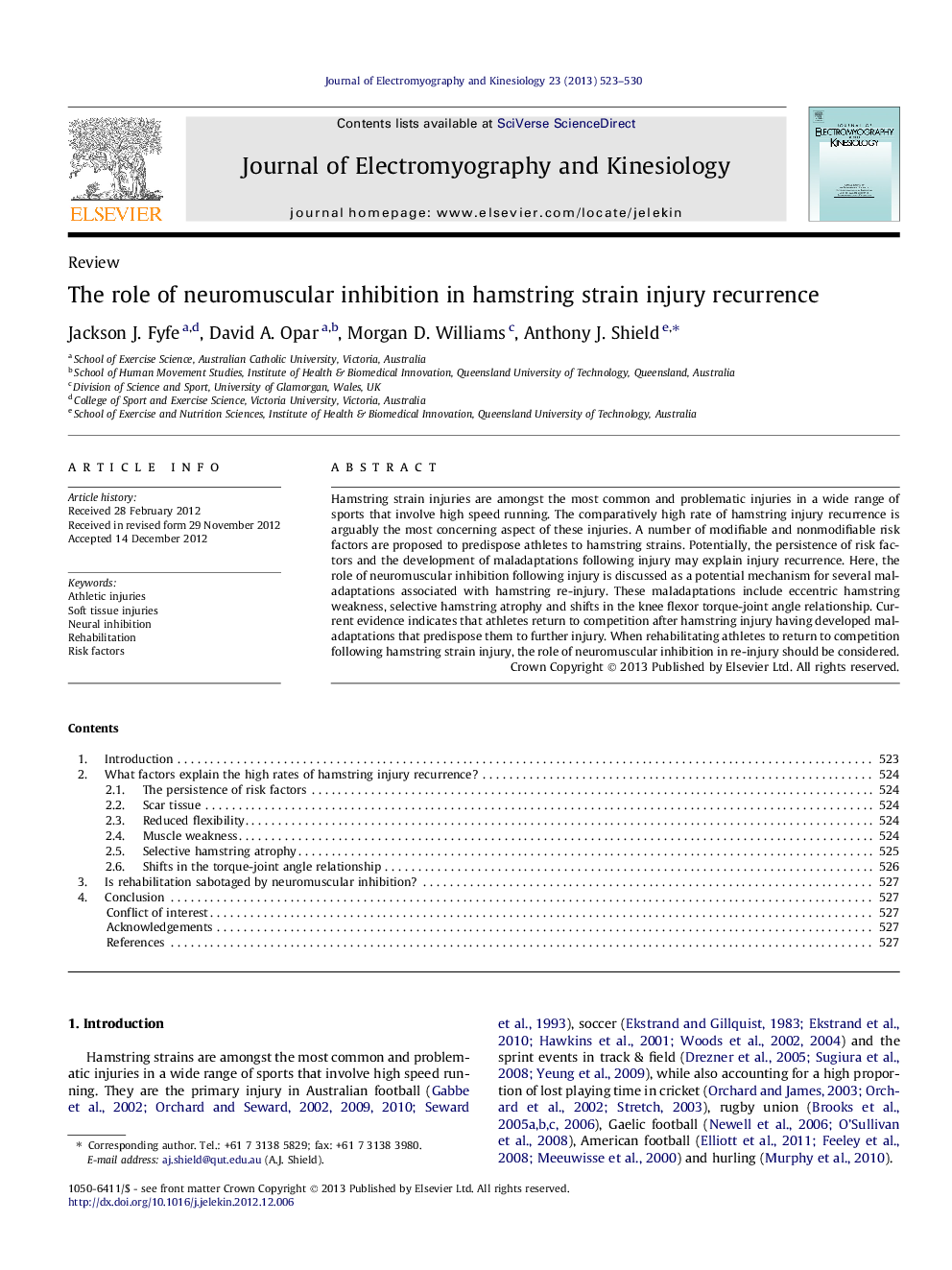| Article ID | Journal | Published Year | Pages | File Type |
|---|---|---|---|---|
| 4064765 | Journal of Electromyography and Kinesiology | 2013 | 8 Pages |
Hamstring strain injuries are amongst the most common and problematic injuries in a wide range of sports that involve high speed running. The comparatively high rate of hamstring injury recurrence is arguably the most concerning aspect of these injuries. A number of modifiable and nonmodifiable risk factors are proposed to predispose athletes to hamstring strains. Potentially, the persistence of risk factors and the development of maladaptations following injury may explain injury recurrence. Here, the role of neuromuscular inhibition following injury is discussed as a potential mechanism for several maladaptations associated with hamstring re-injury. These maladaptations include eccentric hamstring weakness, selective hamstring atrophy and shifts in the knee flexor torque-joint angle relationship. Current evidence indicates that athletes return to competition after hamstring injury having developed maladaptations that predispose them to further injury. When rehabilitating athletes to return to competition following hamstring strain injury, the role of neuromuscular inhibition in re-injury should be considered.
